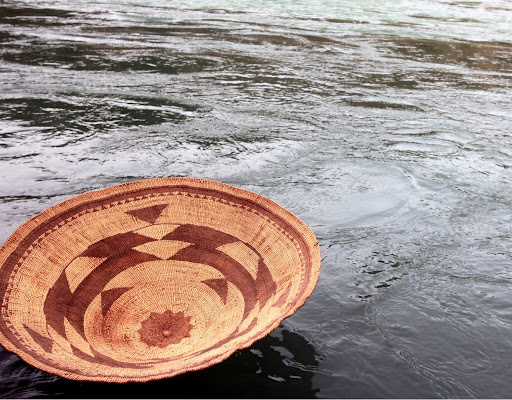Overview
Ka’m-t’em: A Journey Toward Healing: Letter to a Young Native

Author: Kishan Lara-Cooper, PhD (Yurok, Hupa, Karuk)
Lesson partner: Rebecca Lowry, Humboldt County Office of Education
Grade: 6
Suggested Amount of Time: Three 60 minute sessions
Curriculum Themes
- History
- Cultural Strengths
- Relationship to Place
- Cross Curricular Integration
Learning Goals
Students will:
- Be exposed to Indigenous perspectives and relationships with the natural environment.
- Explore human impacts on the natural environment through testimonies and research.
- Design a method for minimizing human impact on the environment both personally and as a community.
Lesson Overview
This lesson utilizes “ Letter to a Young Native: Sovereignty is Action,” by Shaunna McCovey from Ka’m-t’em: A Journey Toward Healing, edited by Kishan Lara-Cooper and Walt Lara. As a Yurok and Karuk person from northwestern California with a background in Environmental law, Native American law, and Social Work, McCovey explains sovereignty from both an Indigenous and federal government perspective. Highlighted in this lesson, McCovey emphasizes how we as human beings must come together to protect the natural environment. This lesson introduces Indigenous perspectives and relationships to the natural environment, human impacts on the natural environment, and methods to minimize the human impact on the environment both personally and as a class community. Included in this lesson, you will engage in read-a-loud and reflection of excerpts from McCovey’s chapter, a vocabulary lesson, conduct interviews, and make a plan to reduce your personal impact on the environment.
The teacher will create an environment that nurtures spaces for multiple perspectives, respect, and engagement to help students to connect to the topic. The teacher will actively engage in discussions that promote positive changes of human impacts on the environment.
Teacher Background
This lesson is part of a statewide Native American Studies Model Curriculum (NASMC) and focuses on the Northwest California region. The Yurok, Hupa, Karuk, Wiyot, and Tolowa peoples live in Northwest California along the redwood coast. The chapter utilized in this lesson is written by Shaunna McCovey. Shaunna wrote her chapter from a Yurok and Karuk perspective. It is important to note that although tribes of the Northwest California region are similar, it is also important to reserve space for their unique differences. For example, Yurok people along the Pacific coast and lower Klamath River utilize redwood plank homes. While Hupa, Karuk, and upper Klamath River Yurok peoples may utilize cedar to build their plank houses. Although it is not integral for students to know and understand all these details, it is important to help them to understand that not all Indigenous/American Indian nations are the same. Likewise, these similarities and differences are a part of Indigenous identities, religious beliefs, customs, and traditions (as noted in the History-Social Science standards). Further, it is also critical to utilize “present-tense language” through the lesson plan. For example: Share with students that “Yurok people use grapevines to tie the redwood plank boards together” rather than “Yurok people used grapevines to tie redwood plank boards together.” “Present-tense language” sends an important message that Yurok people continue to live and thrive today.
Essential Questions:
What have you learned about the environment from an Indigenous perspective?
How has the natural environment changed in the last 50 years? What evidence do you see?
What changes can you make to minimize your impact on the environment?

